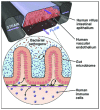Colon Cancer: From Epidemiology to Prevention
- PMID: 35736432
- PMCID: PMC9229931
- DOI: 10.3390/metabo12060499
Colon Cancer: From Epidemiology to Prevention
Abstract
Colorectal cancer (CRC) is one of the most prevalent cancers affecting humans, with a complex genetic and environmental aetiology. Unlike cancers with known environmental, heritable, or sex-linked causes, sporadic CRC is hard to foresee and has no molecular biomarkers of risk in clinical use. One in twenty CRC cases presents with an established heritable component. The remaining cases are sporadic and associated with partially obscure genetic, epigenetic, regenerative, microbiological, dietary, and lifestyle factors. To tackle this complexity, we should improve the practice of colonoscopy, which is recommended uniformly beyond a certain age, to include an assessment of biomarkers indicative of individual CRC risk. Ideally, such biomarkers will be causal to the disease and potentially modifiable upon dietary or therapeutic interventions. Multi-omics analysis, including transcriptional, epigenetic as well as metagenomic, and metabolomic profiles, are urgently required to provide data for risk analyses. The aim of this article is to provide a perspective on the multifactorial derailment of homeostasis leading to the initiation of CRC, which may be explored via multi-omics and Gut-on-Chip analysis to identify much-needed predictive biomarkers.
Keywords: colorectal cancer; epidemiology; gut-on-chip; inter-individual diversity; intestinal microbiota; intra-individual variation; multi-omics; prevention; regenerative inflammation; risk factors.
Conflict of interest statement
The authors declare no conflict of interest.
Figures





References
-
- Dos Santos Silva I. Cancer Epidemiology: Principles and Methods. IARC; Lyon, France: 1999.
-
- World Health Organization; Global Cancer Observatory (Globocan) [(accessed on 1 March 2022)]. Available online: https://gco.iarc.fr/
Publication types
Grants and funding
LinkOut - more resources
Full Text Sources

